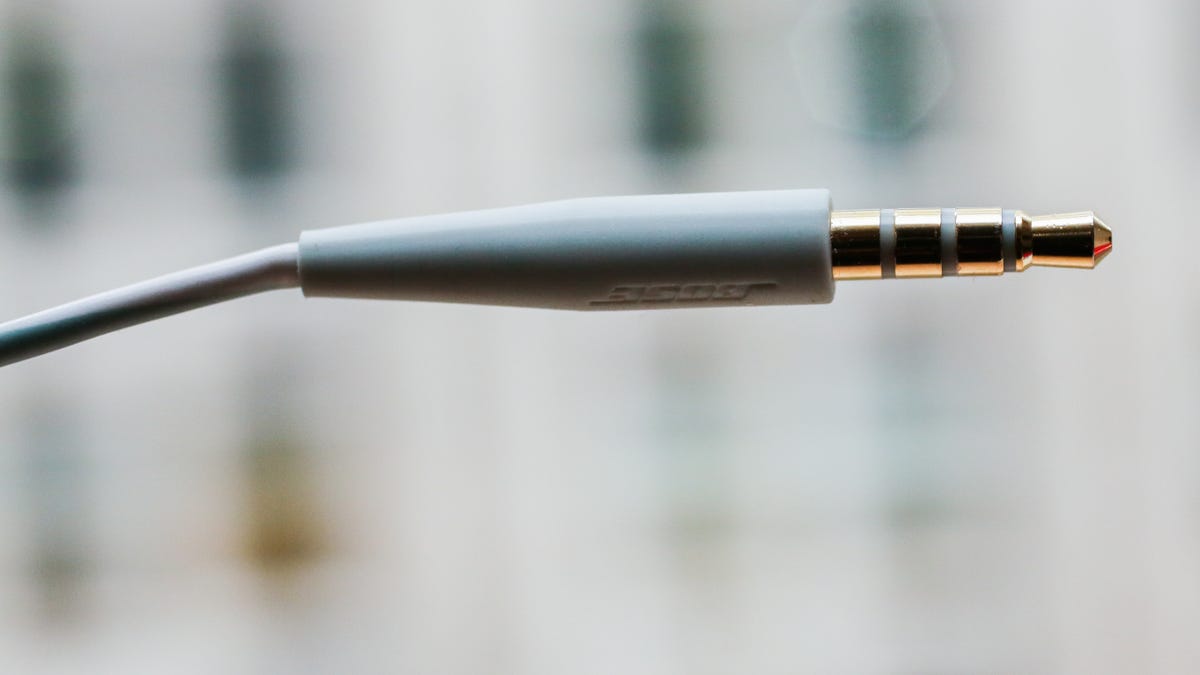Bose changed its headphones to satisfy Apple, and everybody wins
Bose's headphone connectors used to break a lot. VP Sean Garrett tells CNET why going from an L-shaped plug to a "robust" straight plug has helped change that.

Over the years the headphone plug or connector on Bose's headphones has changed, going from L-shaped to straight. In the headphone world, the conventional wisdom once was that a L-shaped plug was typically more durable. Also, the stubbier L-shaped design took a blow or tug better, putting less stress on a device's headphone jack.
We talked with Sean Garrett, Bose's VP of Consumer Electronics Product Engineering, about the thinking behind the company's switch to a straight plug for its wired headphones.
CNET: Did you change from an L-shaped plug to a straight one because you wanted the plug to be more compatible with iPhone cases?
GARRETT: We started with a straight plug, then switched to a 90-degree [L-shaped] plug, thinking that it would provide a more robust and durable solution for customers because it wouldn't have the lever arm on the jack so you wouldn't break the phone or the plug.
Turns out we don't get to dictate the geometry of the connector that goes into the phone. So we're not making design decisions so the connector will fit in cases better; we're making design decisions so they'll meet the specifications that Apple gives us so we can be part of the MFi [Made for iPhone/iPod/iPad] ecosystem just like everybody else.
What we've discovered is that when you go to a 90-degree plug they're getting so small there's not enough room to make all the electrical connections you need -- robustly. And that was always the weak point of our cable; it was always breaking there [at the plug]. We went to a 45-degree plug thinking we'd have more space but instead it's just aggravating because it spins and is never really lined up and gives a bad customer experience.
The L-shaped plug (left) vs. the straight plug (right).
We've also discovered that most phone manufacturers have jacks at the top and mostly at the bottom of the phones so the straight connector is a much better customer experience when the phone's in your pocket. You naturally slide your phone into your pocket so the cable comes straight out of your pocket first.
The other advantage to the straight connector is you have a lot more room to make your electrical connection so even though it seems as if you're going to have a larger lever arm that could break the phone or break the connector it's so much more robust there that you can make a better connection and a longer lasting connection.
CNET: Can you put a number on how much more durable the connector has become?
GARRETT: From our first cable design to the one we have now I'm going to say we probably have two to three orders of magnitude improvement in flex life. That involves materials, connector design, workmanship, etc...
Back in the late 2000s when we were first getting into in-ear headphones we were relying on the industry standard for our cable construction and quite frankly we had a lot of cable fatigue, including breaking at the connectors. As we started fixing each problem we found that we could get more and more life to the point where now fatigue or breakage in our cables is not an issue. We're to the point where they last so long it's material degradation on the outside jacket that's our limiting factor.
CNET: So going forward should we expect Bose to stay with the straight connector?
GARRETT: For any wired headphone going forward you will always see a straight connector. Unless of course we come up with something in the future that can deliver a better customer experience.

